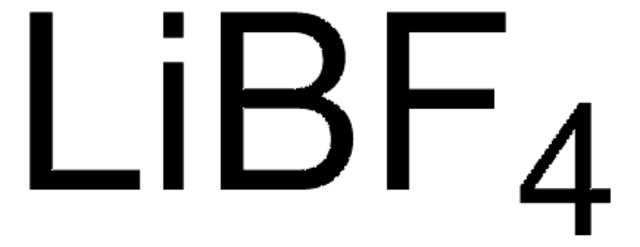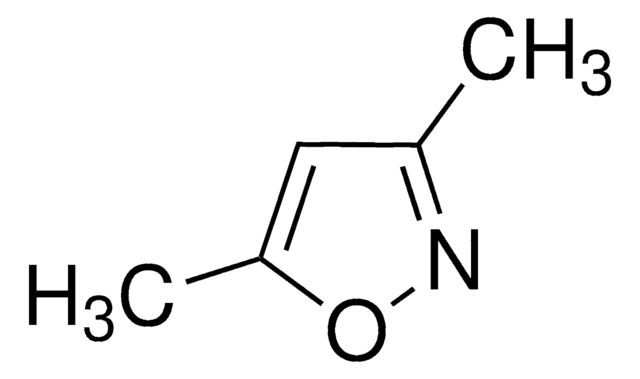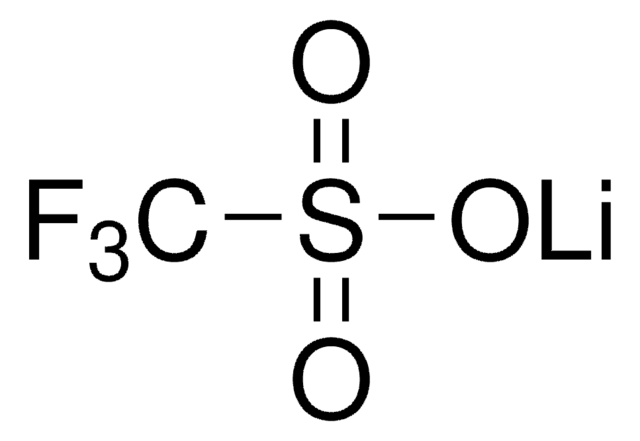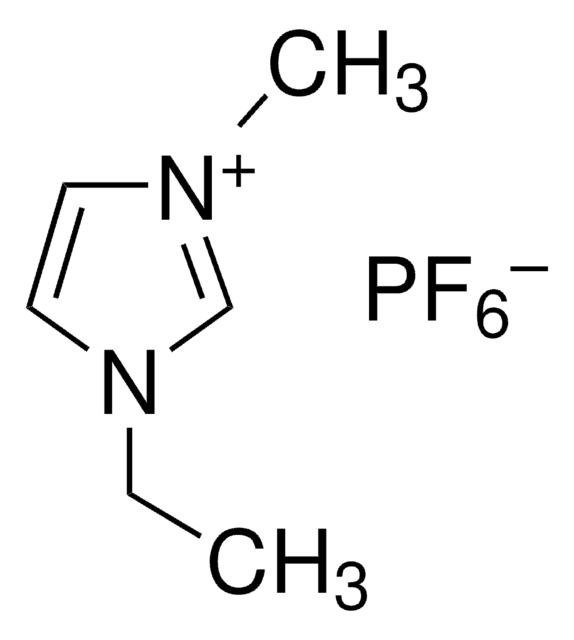451622
Lithium tetrafluoroborate
ultra dry, powder, 99.99% trace metals basis
Synonyme(s) :
Lithium borofluoride, Lithium fluoroborate
About This Item
Produits recommandés
Qualité
for analytical purposes
Niveau de qualité
Description
Grade: ultra dry
Essai
99.99% trace metals basis
Forme
powder
Caractéristiques du produit alternatif plus écologique
Design for Energy Efficiency
Learn more about the Principles of Green Chemistry.
sustainability
Greener Alternative Product
Impuretés
≤150.0 ppm Trace Metal Analysis
Pf
293-300 °C (dec.) (lit.)
Application(s)
battery manufacturing
Autre catégorie plus écologique
, Enabling
Chaîne SMILES
[Li+].F[B-](F)(F)F
InChI
1S/BF4.Li/c2-1(3,4)5;/q-1;+1
Clé InChI
UFXJWFBILHTTET-UHFFFAOYSA-N
Vous recherchez des produits similaires ? Visite Guide de comparaison des produits
Catégories apparentées
Description générale
Application
Produit(s) apparenté(s)
À utiliser avec
Mention d'avertissement
Danger
Mentions de danger
Classification des risques
Acute Tox. 4 Oral - Eye Dam. 1 - Muta. 2 - Skin Corr. 1B
Code de la classe de stockage
8B - Non-combustible corrosive hazardous materials
Classe de danger pour l'eau (WGK)
WGK 3
Point d'éclair (°F)
Not applicable
Point d'éclair (°C)
Not applicable
Équipement de protection individuelle
Eyeshields, Faceshields, Gloves, type P3 (EN 143) respirator cartridges
Faites votre choix parmi les versions les plus récentes :
Déjà en possession de ce produit ?
Retrouvez la documentation relative aux produits que vous avez récemment achetés dans la Bibliothèque de documents.
Les clients ont également consulté
Articles
Increasing fuel costs and concerns about greenhouse gas emissions have spurred the growth in sales of hybrid electric vehicles (HEVs) that carry a battery pack to supplement the performance of the internal combustion engine (ICE).
Nanomaterials for Energy Storage in Lithium-ion Battery Applications
Dr. Sun reviews the recent advances in solid-state rechargeable batteries and cover the fundamentals of solid electrolytes in solid-state batteries, the theory of ion conduction, and the structures and electrochemical processes of solid-state Li batteries.
Electrode Materials for Lithium Ion Batteries
Notre équipe de scientifiques dispose d'une expérience dans tous les secteurs de la recherche, notamment en sciences de la vie, science des matériaux, synthèse chimique, chromatographie, analyse et dans de nombreux autres domaines..
Contacter notre Service technique














